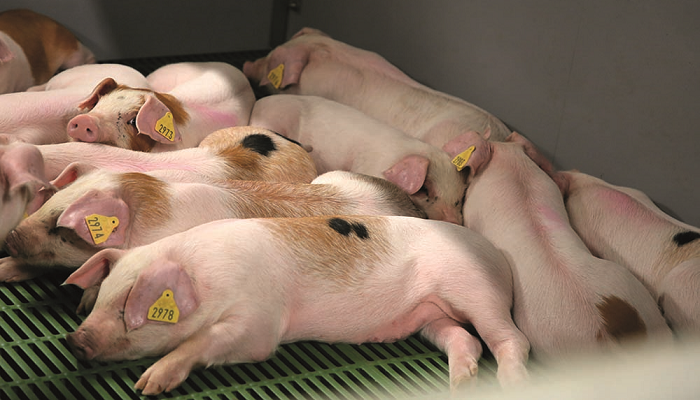13 June 2025
Gene editing: The next leap in pig production efficiency?

Could gene editing transform pig production as a new tool to boost production efficiency and disease resistance?
The US Food and Drug Administration’s (FDA’s) recent decision has prompted Teagasc researcher, Dr. Peadar Lawlor to explore what this technology might mean for the future of the industry in Europe.
It is truly remarkable to reflect on the progress made in pig productivity over the past 20 years. Consider, for example, the increase in litter size and the notable improvements in feed conversion efficiency now being achieved on commercial pig units. In the cold light of day, these productivity gains are nothing short of astounding. Yet, judging by a recent decision by the US Food and Drug Administration (FDA) on 30th April 2025, it appears that ‘you ain’t seen nothing yet’.
The FDA has determined that gene editing technology used by PIC to create a Porcine Reproductive and Respiratory Syndrome (PRRS)-resistant pig is safe and effective. It also ruled that meat from such animals may be consumed by US consumers. This approval may well be considered a watershed moment for global pig production.
The gene edit approved can now be used by PIC to breed PRRS-resistant pigs. On farms, this means that the negative impacts of PRRS could become a thing of the past, alongside significant benefits in productivity and reductions in antibiotic usage. It is highly likely that this marks only the beginning, with further approvals from PIC and other genetic companies expected to follow, targeting other diseases.
How far could gene editing go?
The real question is: where does this stop? Could gene editing be used to directly improve productivity traits such as average daily gain or litter size? Might it be used to alter the composition of pig meat, such as enhancing the fatty acid profile in fat, to provide health benefits to consumers?
Genetic companies might even use the technology to enable pigs to express enzymes they do not normally produce, such as phytase. This would allow pigs to release phosphorus from plant-bound phytate, or digest feed materials currently unusable to them.
What is gene editing?
Gene editing is a form of genetic engineering that has existed for over 20 years, although major methodological breakthroughs have occurred in the past decade. It involves inserting, removing, modifying, or replacing DNA within the genome of a living organism.
Unlike earlier genetic engineering, which involved randomly inserting material into the host genome, gene editing is highly targeted. It introduces new DNA at specific sites within the genome. The recent FDA approval of PRRS-resistant pigs signals that the technology has gained regulatory acceptance for use in food-producing animals, at least in the United States.
Europe’s position
But what about Europe? Will we follow suit, or prohibit the technology indefinitely? If Europe bans gene editing, will this result in pig meat being produced more efficiently, and thus more cheaply, elsewhere?
I don’t have the answers. These are questions that must be addressed in the years ahead. Naturally, there will be ethical concerns regarding the use and scope of the technology, as well as its safety. All such concerns will need to be rigorously addressed during regulatory approval processes.
Nonetheless, the genie is now well and truly out of the bottle. Other countries, such as Brazil and Colombia, have already announced that they will regulate PRRS-resistant pigs in the same way as conventionally bred pigs.
Cautious optimism
To be perfectly honest, I’m still not fully certain how I feel about the potential widescale adoption of gene editing in pig breeding. Nevertheless, it is clear that the technology offers extraordinary and unprecedented benefits: improved production efficiency, reduced medication use, and the ability to feed pigs diets that are currently unsuitable.
This FDA approval, and others likely to follow, may well mark the dawn of a new era in animal production.
